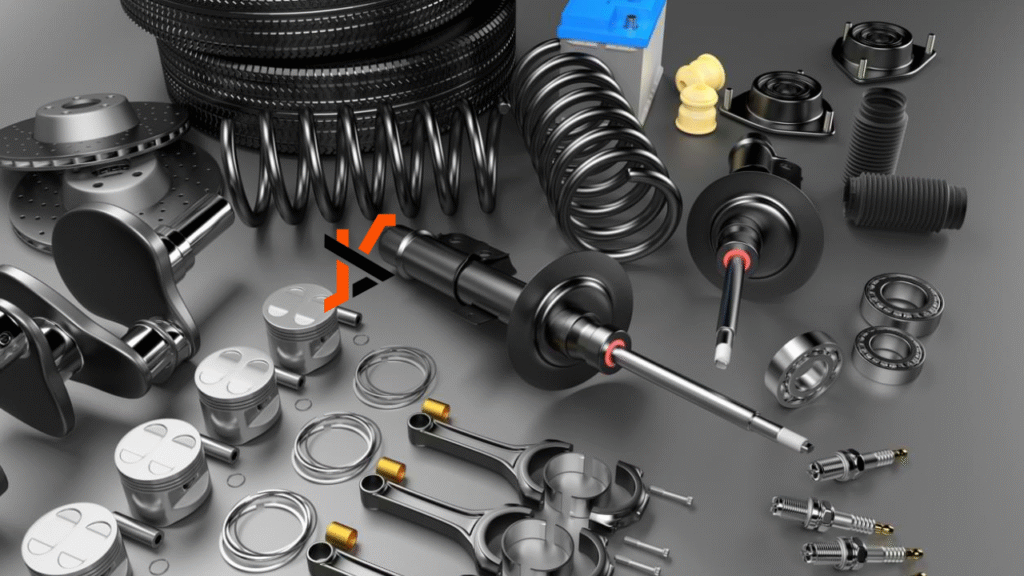When it comes to maintaining or repairing your Isuzu vehicle, one of the biggest decisions you’ll face is choosing between OEM (Original Equipment Manufacturer) parts and aftermarket parts. Whether you’re browsing isuzu parts for saleor working with a mechanic, understanding the differences between these two options can help you make the best choice for your vehicle’s performance, longevity, and your budget. Both OEM and aftermarket parts have their benefits and drawbacks, and this comparison will break down five key areas to consider so you can decide which suits your needs best.
1. Quality and Fitment
One of the most significant differences between OEM and aftermarket Isuzu parts is the quality and fitment. OEM parts are made by the same manufacturer that produced the original parts for your vehicle. This means they are designed to meet the exact specifications and standards set by Isuzu, ensuring a perfect fit and optimal performance.
Aftermarket parts, on the other hand, are produced by third-party companies. While many aftermarket parts meet or even exceed OEM quality, there can be variability depending on the manufacturer. Some aftermarket parts might require slight modifications or adjustments to fit properly, which can affect installation time and overall performance.
Choosing OEM parts guarantees that what you install is precisely what your vehicle was designed to use, which can be crucial for safety-critical components. However, many aftermarket parts offer reliable quality at a lower price, making them a popular alternative for non-critical repairs.
2. Price Differences
Price is often the most influential factor when choosing between OEM and aftermarket Isuzu parts. OEM parts generally come with a higher price tag because they are produced by the original manufacturer and are often sold exclusively through authorized dealerships or certified suppliers.
Aftermarket parts typically cost less, sometimes significantly so, making them an attractive option for budget-conscious vehicle owners. The lower price point is often due to multiple manufacturers producing similar parts, creating competition and driving costs down.
While aftermarket parts can save you money upfront, it’s important to balance cost savings with the potential need for more frequent replacements or repairs if lower-quality parts are used. OEM parts may have a higher initial cost but can provide better long-term value due to their durability and reliability.
3. Warranty and Guarantee
Warranty coverage can vary widely between OEM and aftermarket Isuzu parts, and it’s a critical consideration for many buyers. OEM parts usually come with a warranty from the manufacturer that covers defects in materials or workmanship for a specified period. This warranty often aligns with your vehicle’s overall warranty, giving you peace of mind.
Aftermarket parts may come with their own warranties, but these tend to be shorter and less comprehensive. Some aftermarket manufacturers offer lifetime warranties, but these are usually limited to specific components or under certain conditions.
OEM parts typically provide more predictable and consistent warranty coverage, which can save you money and hassle if a part fails prematurely.
4. Availability and Variety
Availability is another key difference. OEM parts are often only available through authorized Isuzu dealerships or official suppliers, which can limit accessibility depending on your location. In some cases, ordering OEM parts can take longer, especially if they need to be shipped from a central warehouse.
Aftermarket parts, by contrast, are widely available from numerous sources, including auto parts stores, online retailers, and independent suppliers. This broad availability means you can often find parts faster and have multiple options to choose from.
Moreover, the aftermarket industry offers a wider variety of parts, including performance upgrades and custom components not available as OEM. For Isuzu owners looking to modify or enhance their vehicles, aftermarket parts provide more choices.
5. Impact on Vehicle Performance and Resale Value
Choosing between OEM and aftermarket parts can also impact your vehicle’s performance and resale value. Since OEM parts are designed specifically for your Isuzu model, they maintain the vehicle’s original performance and reliability standards. Using OEM parts can help preserve the integrity of your vehicle, which is often a positive factor when it comes time to sell or trade in.
Aftermarket parts may vary in how they affect performance. High-quality aftermarket components can sometimes improve certain aspects of your vehicle, such as upgraded brake pads or suspension parts. However, poor-quality aftermarket parts can degrade performance or cause compatibility issues.
When it comes to resale value, vehicles with documented OEM part replacements may retain value better, as buyers often prefer cars maintained with original equipment. Using aftermarket parts is generally acceptable but having receipts and warranties can help reassure potential buyers of your vehicle’s upkeep.
Conclusion
Deciding between OEM and aftermarket Isuzu parts involves weighing factors like quality, price, warranty, availability, and long-term impact on your vehicle. OEM parts offer guaranteed fitment and reliability but come with a higher price and sometimes limited availability. Aftermarket parts provide cost savings and variety but require careful selection to ensure quality and compatibility.
Ultimately, the decision depends on your budget, vehicle usage, and priorities, but being informed helps you protect your Isuzu’s performance and value for years to come.

